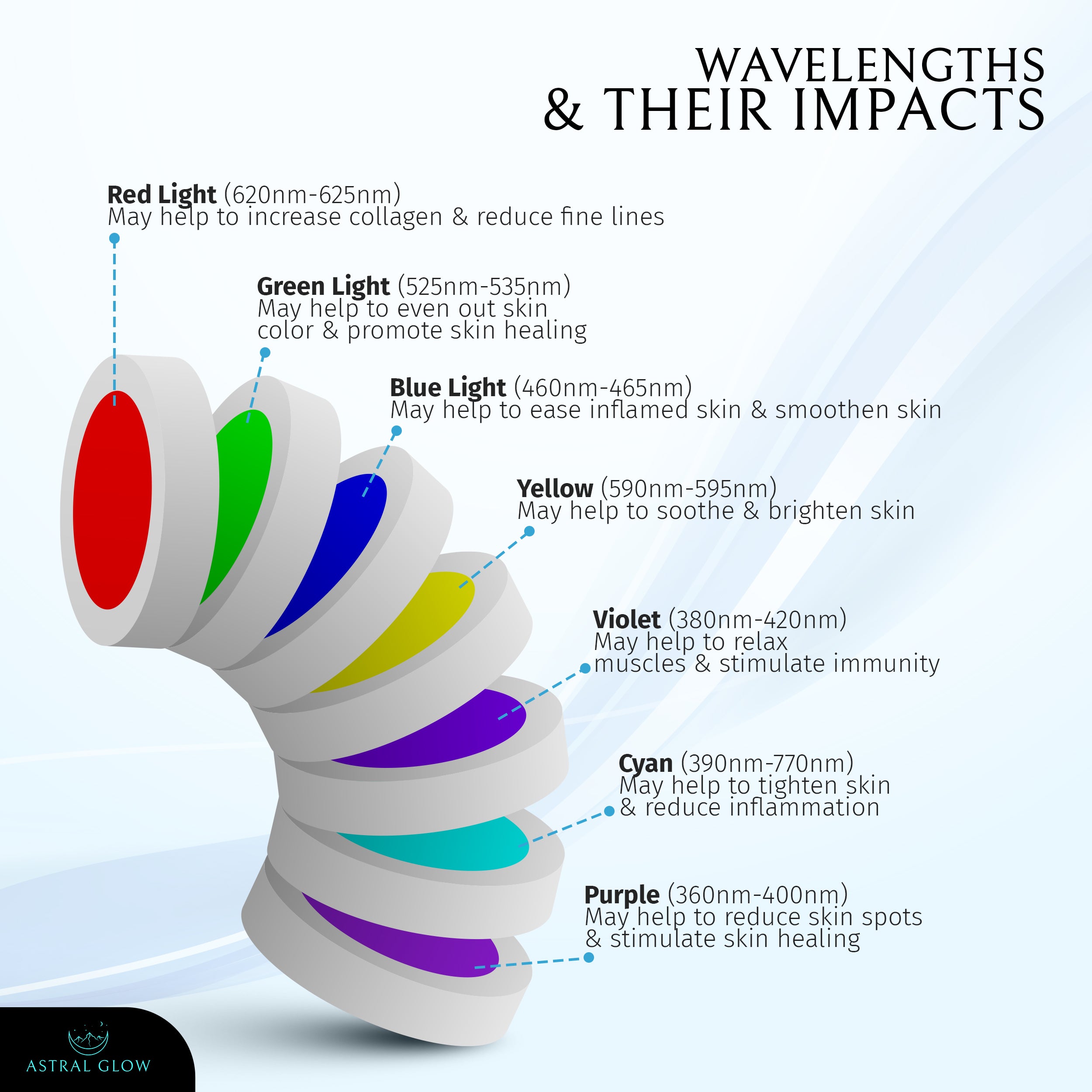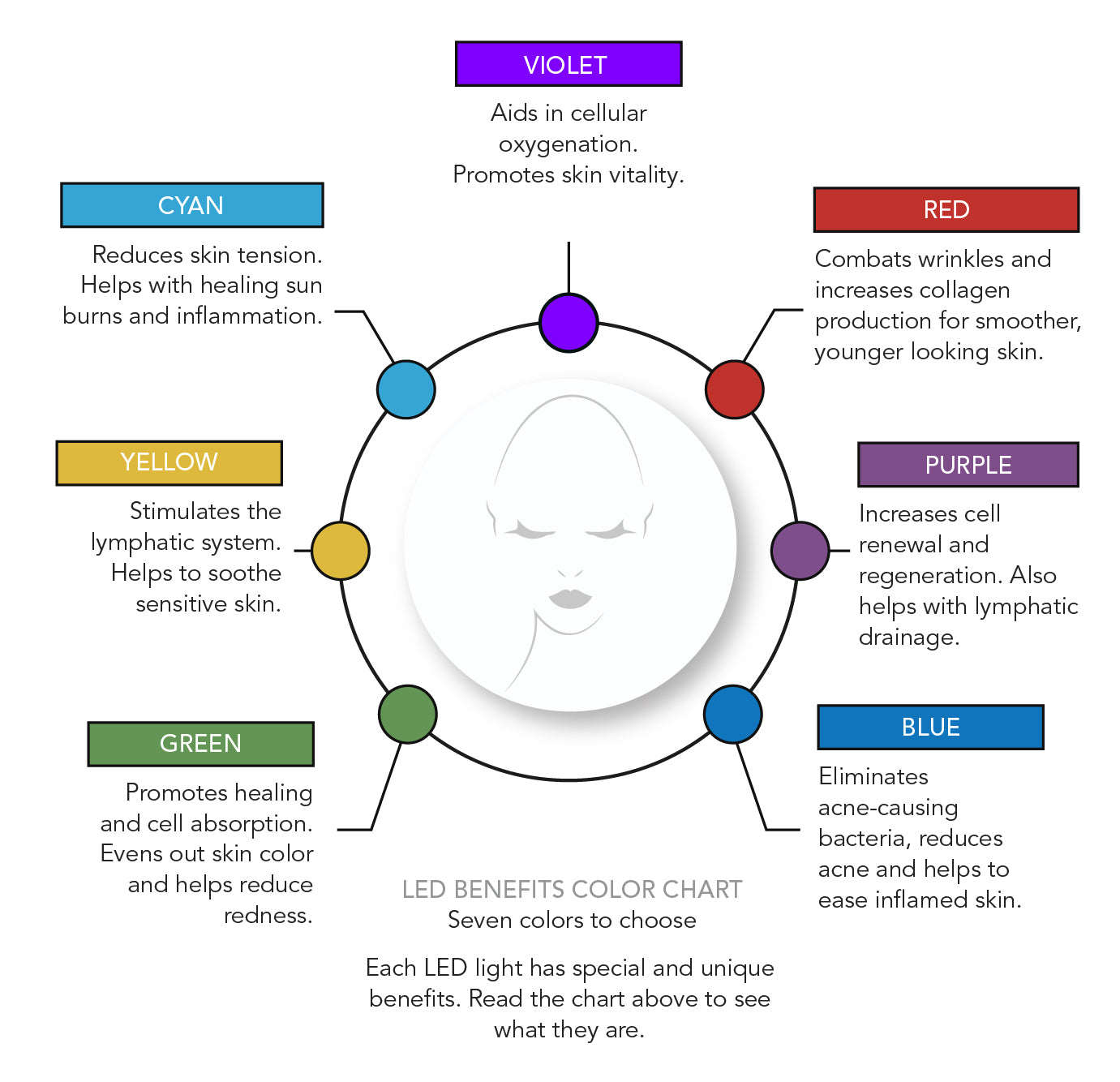
The Science Behind LED Light Therapy
How LED Light Therapy Works
LED (Light Emitting Diode) Light Therapy is a non-invasive skincare treatment that utilizes different wavelengths of light to improve various skin concerns. It works by stimulating the skin at a cellular level, promoting natural healing processes. Here's how it works:
-
1. Red Light (620-750nm):
Science: Red light penetrates the skin's dermis layer, where it stimulates the production of collagen and elastin. This is achieved through a process called photobiomodulation, where the light energy is absorbed by mitochondria in skin cells, leading to increased ATP (adenosine triphosphate) production. This, in turn, promotes cell turnover and repair.
Benefits: Increased collagen and elastin production results in improved skin elasticity, reduced fine lines and wrinkles, and enhanced overall skin texture.
-
2. Blue Light (405-495nm):
Science: Blue light at a specific wavelength targets porphyrins, which are molecules produced by acne-causing bacteria (Propionibacterium acnes). When exposed to blue light, these porphyrins generate reactive oxygen species (ROS), causing damage to the bacteria and leading to its destruction.
Benefits: Blue light effectively treats acne by reducing the population of acne-causing bacteria and decreasing inflammation.
-
3. Green Light (495-570nm):
Science: Green light is absorbed by melanin-producing cells in the epidermis, where it helps to break down excess melanin and inhibit its production. Additionally, it can penetrate the skin's surface to target redness and dilated blood vessels.
Benefits: Green light is beneficial for improving skin tone, reducing redness, and addressing hyperpigmentation issues.
-
4. Yellow Light (570-590nm):
Science: Yellow light penetrates the epidermis and dermis layers, where it helps to reduce redness and inflammation. It also stimulates the lymphatic system, promoting detoxification and improved circulation.
Benefits: Yellow light therapy is ideal for calming sensitive skin, reducing redness, and enhancing overall skin health.
-
5. Violet Light (380-495nm):
Science: Violet light combines the antibacterial properties of blue light with the anti-inflammatory effects of red light. It can penetrate the skin's surface to target acne-causing bacteria and reduce inflammation.
Benefits: Violet light is effective for treating acne and promoting clearer skin.
-
6. Cyan Light (495-520nm):
Science: Cyan light promotes cellular energy production by enhancing mitochondrial activity. This increased cellular energy helps with skin cell turnover and the synthesis of essential proteins.
Benefits: Cyan light is used to improve skin vitality, texture, and overall radiance.
-
7. Purple Light (380-495nm):
Science: Purple light combines the benefits of both red and blue light. It targets acne bacteria and stimulates collagen production, providing a dual-action approach.
Benefits: Purple light is effective for acne treatment and anti-aging benefits.
In all cases, LED Light Therapy is a safe and non-invasive approach to skincare. The specific wavelengths of light used in LED devices are carefully chosen to target various skin concerns effectively. Consistent and targeted exposure to these wavelengths can result in significant improvements in skin health and appearance over time.

How LED Light Therapy Benefits Your Skin
- Non-Invasive: LED therapy is gentle and non-invasive, making it suitable for all skin types without causing damage or downtime.
- Stimulates Collagen: LED light stimulates the production of collagen and elastin, essential proteins that maintain skin's firmness and elasticity.
- Reduces Acne: Blue and violet light target acne-causing bacteria, reducing breakouts and preventing future ones.
- Improves Skin Tone: Green and yellow light help even out skin tone, reduce redness, and minimize the appearance of pigmentation.
- Pain-Free: LED therapy is painless and can be a relaxing experience, often likened to lying in the warm sun.
- Visible Results: With consistent use, LED light therapy can deliver noticeable improvements in skin texture, tone, and overall complexion.
- Complements Other Treatments: LED therapy can be used alongside other skincare treatments, enhancing their effectiveness.
- No Downtime: There's no downtime associated with LED therapy, allowing you to return to your regular activities immediately.
Remember that individual results may vary, and it's important to use LED light therapy devices as directed for the best outcomes. If you have specific skin concerns or conditions, consult with a dermatologist or skincare professional for personalized advice.
